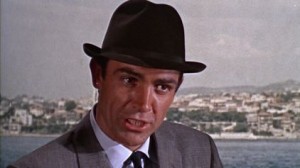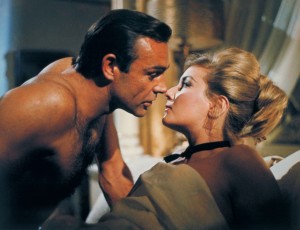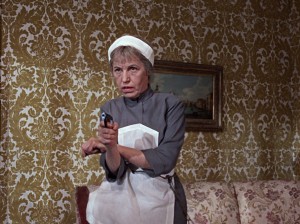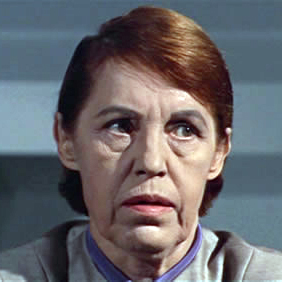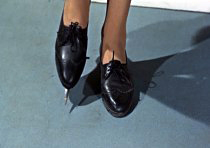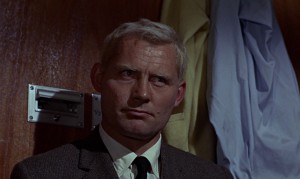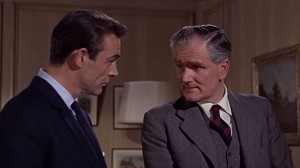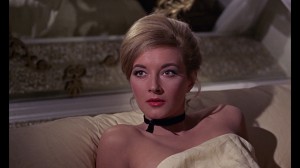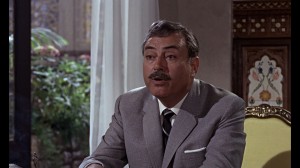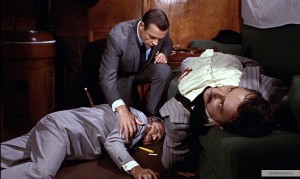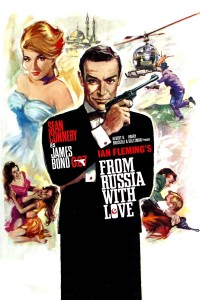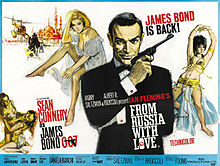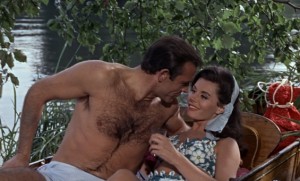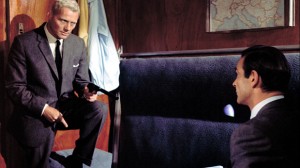From Russia with Love ***** (1963, Sean Connery, Robert Shaw, Lotte Lenya, Daniela Bianchi, Pedro Armendáriz, Eunice Gayson, Bernard Lee, Lois Maxwell, Desmond Llewelyn) – Classic Movie Review 402
‘Meet James Bond. His new incredible women. His new incredible enemies. His new incredible adventures.’
Following the huge success of Dr No in 1962, the second 007 spy film From Russia with Love is more spectacular and scores strongly as indisputably one of the best in the whole series. Now, by 1963, the athletic Sean Connery has completely taken over the James Bond role he made his own, merging actor and character to a rare degree. There’s a 17-minute build-up to his arrival on screen.
The production is bigger, bolder, costlier, more elaborate and more ambitious than in Dr No. The $2 million budget is double Dr No‘s of $1.1 million, after United Artists eagerly greenlit a sequel after the first film took $59.5 million, allowing for filming on location in Turkey and in Scotland, as well as at Pinewood Studios, Buckinghamshire. Even so, it ran over budget and schedule, and was in a rush to finish for its UK October 1963 release.
Despite having the same personnel, director Terence Young’s film-making is far more stylish and Richard Maibaum and Johanna Harwood’s screen-writing (based Ian Fleming’s 1957 novel) is far more confident than before. Following the plot of the novel, Bond is sent to assist in the defection of Soviet consulate clerk Tatiana Romanova (Daniela Bianchi) in Turkey, where SPECTRE plans to avenge Bond’s killing of Dr No. (Though the novels were written the other way round, with From Russia with Love immediately preceding the 1958 Dr No).
Incidentally Fleming based Romanova on Maria Krystyna Janina Skarbek, OBE, GM (1 May 1908 – 15 June 1952), aka Christine Granville, a Polish agent of the British Special Operations Executive in World War Two, celebrated for her daring exploits in Nazi-occupied Poland and France.
And then there are memorable, self-consciously larger-than-life villains in Robert Shaw’s cunning, blond-haired, muscle-man SPECTRE assassin Donald ‘Red’ Grant and Lotte Lenya’s scarily butch lesbian spy Rosa Klebb (homophobia alert!), a former SMERSH colonel turned SPECTRE operative.
Klebb manipulates Tatiana Romanova into helping Bond steal the Lektor, a decoding device of high value to MI6, and then sends Red Grant to kill Bond and recover it. As in the novel, Klebb attempts to kick Bond with her poison-tipped shoe, but Bond blocks the attack with a chair.
In the novel, it is very strongly implied that Klebb is a lesbian, though in the film her sexuality is made slightly, but not much, less obvious. Klebb is portrayed as butch and unattractive, making unwanted advances to Bond’s love interest, Tatiana Romanova. Shamefully, Bond’s heterosexuality and Klebb’s homosexuality play out as a battle of good versus evil, with Fleming and the film relishing indulging in clichés about Soviet women (bad) and European women (good).
Ironically, of course, Lenya’s Klebb is much more interesting than any of the other women in the film (or book). Who remembers Daniela Bianchi’s Tatiana now? Klebb’s character and shoe blade have gone into the film culture. She’s a top ten Bond villain and inspired Frau Farbissina in the Austin Powers series. The shoe blade has featured in other films: Crouching Tiger, Hidden Dragon, Ichi the Killer, Wild Wild West, The Dark Knight, Salt, and Kingsman: The Secret Service. Klebb is one of two memorable lesbians in Fleming’s novels, the other being Pussy Galore in Goldfinger.
Klebb’s name comes the popular Soviet phrase for women’s rights, khleb i rozy, a Russian translation of the internationally used labour union slogan ‘bread and roses’.
Both Shaw and Lenya make huge, splashy impressions in their unforgettable appearances.
Plus there is Mexican star Pedro Armendáriz’s cool turn to admire as Kerim Bey, the amiable Turkish spy boss on Bond’s side, and Eunice Gayson’s iconic re-appearance (after Dr No) as the first Bond girl Sylvia Trench.
Plus Bernard Lee appears as chief of British Intelligence M, Lois Maxwell as M’s secretary Miss Moneypenny and Desmond Llewelyn appears for the first time as Q, aka Major Boothroyd, head of MI6 Q Branch, also known as the Equipment Officer. Finally, the whole team’s assembled. Peter Burton, who plays the role of Q in Dr No was unable to return so it was cast with Llewelyn, who reprised it in 16 subsequent Bond films. Q is referred to by his real name only in Dr No and The Spy Who Loved Me.
The SMERSH villains make gorgeously alluring Soviet spy Tatiana Romanova (Italy’s 1960 Miss Universe Daniela Bianchi, dubbed by Barbara Jefford) seem to be a defector to trap Bond, as the action moves from Istanbul to Venice and then aboard a trans-Europe train where there is a humdinger of a scrap between Connery and Shaw.
Appealing and charming though it is, it’s still very much a film of its period. That means in places it has dated a little and some of it is a bit faded at the edges. Unfortunately, the lengthy studio-bound gypsy camp sequence has not stood the test of time and is very creaky and some of the shaky back-projections and dead-looking sets and backdrops sometimes give the film a tatty fake look. Ace production designer Ken Adam is much missed, away working on his masterpiece, Dr Strangelove.
Yet many of the production designs have a marvellous look about them. But here’s the good thing. Unusually for a film of 1963, much of it was shot on location and only a minimum of back projection used. The Istanbul, Venice and Scotland location filming’s an enormous asset, making up for some of the creaky work at Pinewood studios in England, and pointing the way to more globe-hopping that became another of the franchise’s trademarks.
And the movie’s still a glossy, thrilling and alluring treat, pulling off a difficult trick of being firmly tongue in cheek and fantasy-style escapist while at the same time respecting the mechanics of the spy thriller.
Uber-baddie Ernst Stavro Blofeld makes his first appearance, played by Anthony Dawson, the same actor who plays the character Professor Dent whom Bond kills in cold blood in Dr No. Dawson returns as Blofeld in Thunderball, making him the only actor to have played Blofeld more than once, until Christoph Waltz played him in Spectre and again in No Time to Die (2021). Blofeld’s voice is dubbed by Eric Pohlmann. Only Dawson’s hands and back of head are seen. The end credits list a question mark instead of an actor’s name in the Ernst Blofeld field, though he is only referred to as Number One in the film.
Also in the cast are Walter Gotell as SPECTRE thug Morzeny, Francis de Wolff as Gypsy tribe chief Vavra, George Pastell as the Orient Express train conductor, Nadja Regin as Kerim Bey’s girlfriend, Aliza Gur and Martine Beswick as Gypsy girls Vida (in red) and Zora (in green), Vladek Sheybal as Kronsteen (SPECTRE agent No. 5), Leila (Lisa Guiraut) as a Gypsy belly dancer, Neville Jason as Kerim Bey’s chauffeur, Peter Bayliss as Russian agent Commissar Benz, Nusret Ataer as Kerim Bey’s son and agent Mehmet, and Peter Madden as Canadian chessmaster MacAdams, Michael Culver and Elizabeth Counsell as a couple in a punt and William Hill as British agent Captain Nash, killed and impersonated by Red Grant.
Eunice Gayson’s Sylvia Trench was meant to be a recurring character, always on the point if making love to 077 when he is suddenly called away, but sadly this idea was dropped.
The John Barry score, Monty Norman’s James Bond theme and Lionel Bart’s title song (sung by Matt Monro) are priceless assets to the mood of this perfect time capsule.
Though an unpolished gem, Robert Brownjohn’s title design also effortlessly conjures up the period.
Pedro Armendáriz found out that he had cancer during the production, which was hastened so he could complete the role. He committed suicide by gunshot on 18 June 1963 in Los Angeles, aged only 51. His son Pedro Armendáriz Jr appeared as President Hector Lopez in Licence To Kill. Robert Shaw was also aged only 51 when he died of a heart attack in 1978.
SPECTRE headquarters is the main office administration building of Pinewood Studios. SPECTRE = Special Executive for Counter-intelligence, Terrorism, Revenge and Extortion. It now also the title of the 2015 Bond movie, Spectre.
It is the first Bond film to end with ‘James Bond will return in …’.
From Russia with Love premiered on 10 October 1963 in London, and opened in the UK on 11 October 1963. Production was already underway on Goldfinger by the time it opened in the US on 27 May 1964.
It was a blockbuster hit, taking more than $78 million in worldwide box-office receipts on a $2 million budget, far more than Dr No.
It was the last movie John F Kennedy saw. He was killed the very next day, November 22, 1963.
http://derekwinnert.com/goldfinger-classic-film-review-403/
© Derek Winnert 2013 Classic Movie Review 402
Check out more reviews on http://derekwinnert.com/

